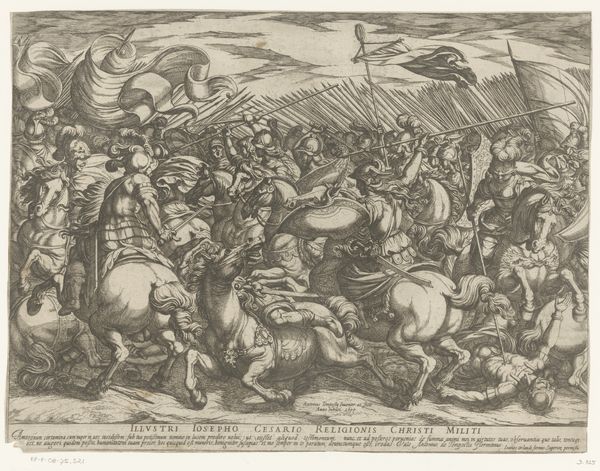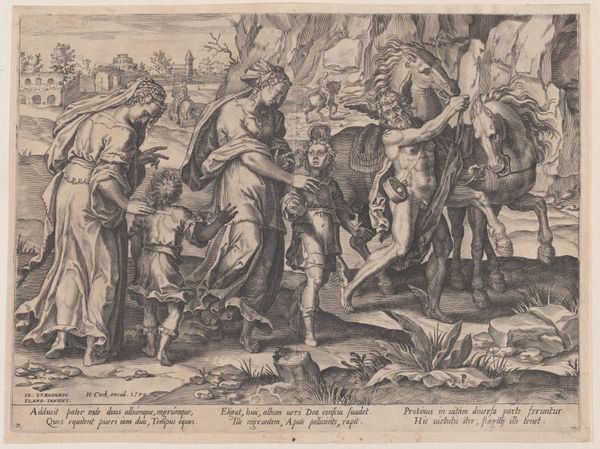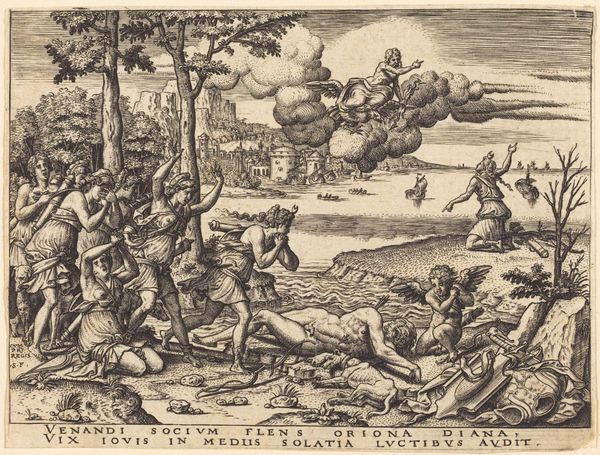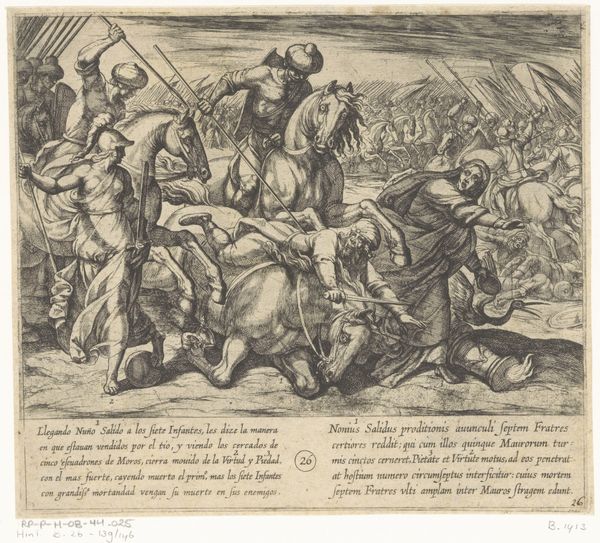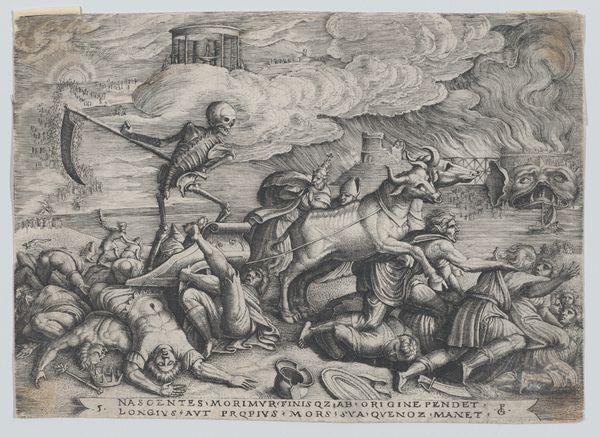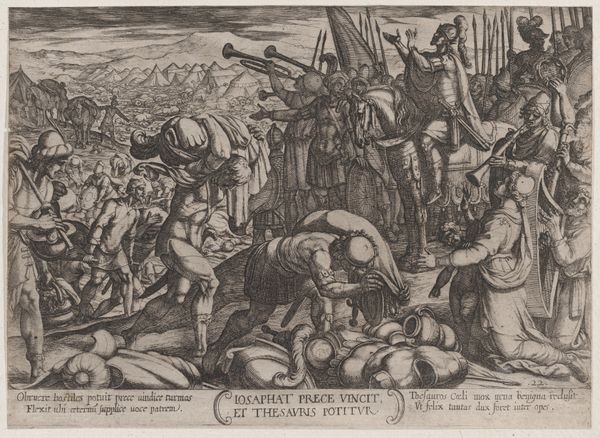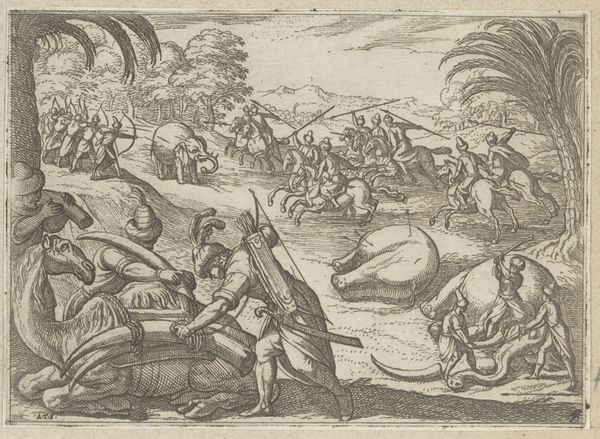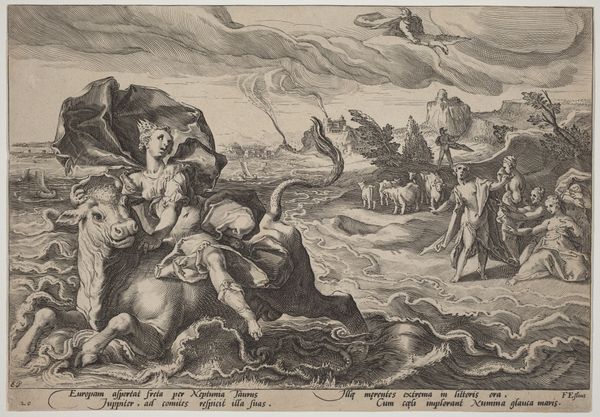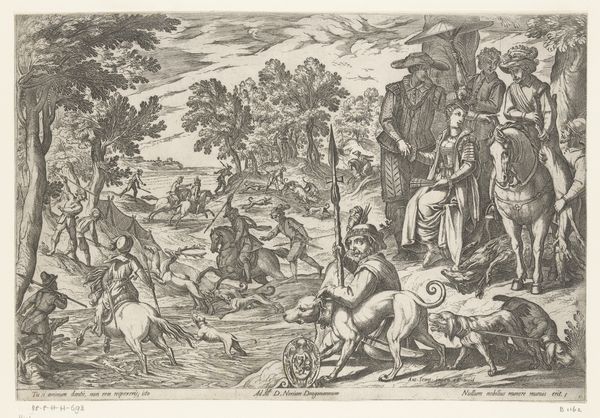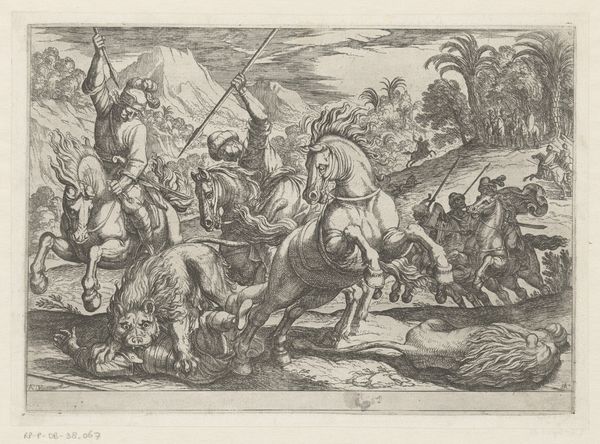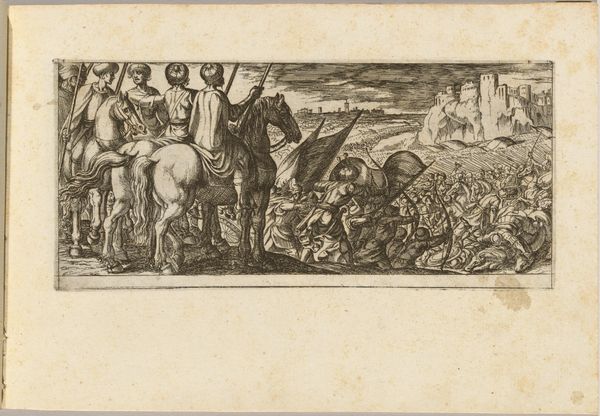
The Triumph of Eternity on Death, from The Triumph of Petrarch 1534 - 1544
0:00
0:00
drawing, print, engraving
#
drawing
# print
#
figuration
#
men
#
history-painting
#
italian-renaissance
#
engraving
#
christ
Dimensions: Sheet: 5 1/2 × 8 1/4 in. (13.9 × 21 cm)
Copyright: Public Domain
Curator: I find the graphic clarity of this work by Georg Pencz really striking. This engraving, dating from sometime between 1534 and 1544, is called "The Triumph of Eternity on Death, from The Triumph of Petrarch." What’s your immediate reaction? Editor: Ominous, undeniably. The high contrast achieved through the engraving process, coupled with the swirling forms, creates a sense of dramatic turbulence. Death is in free fall and everything feels unstable. Curator: Note how Pencz uses line weight and density to define the forms and create a sense of depth. The varying line quality suggests he was a very skilled printmaker. Do you observe a structured compositional logic amidst the chaos? Editor: Absolutely. Look at the allegorical figures – the bull, the lion, all supporting Christ triumphant. These recurring figures point to the continuous influence of earlier iconographic traditions, merging classical and Christian imagery in the Renaissance fashion. Death and those swept away below offer an inverse to Christ in glory above. It’s a compelling dichotomy. Curator: I'm interested in the inscription along the lower edge. How do you feel that functions within the work? It visually grounds it and gives you, the viewer, some footing, despite all the motion depicted in the main image area. Editor: That inscription seems to clarify Pencz's thematic concerns in "Triumph of Eternity on Death" -- a somber meditation on life’s impermanence set against the eternal, divine promise. It serves as a constant reminder of what matters against the fall of kingdoms below, adding another symbolic layer to the visuals. Curator: Ultimately, Pencz harnesses traditional artistic language and vernacular printmaking of the Italian Renaissance period. With his own skilled hand he then communicates something quite original through dynamic figure groupings. Editor: And it’s the enduring nature of those symbols, and the artistic continuity Pencz represents, that speaks to me. These ideas resonate today in ways that still encourage the viewer to ask questions about mortality. Curator: Indeed, the layers of structural complexity and symbolic encoding render it fascinating. Editor: The combined impact of this particular cultural encoding, though… It still creates a space for new interpretations.
Comments
No comments
Be the first to comment and join the conversation on the ultimate creative platform.
